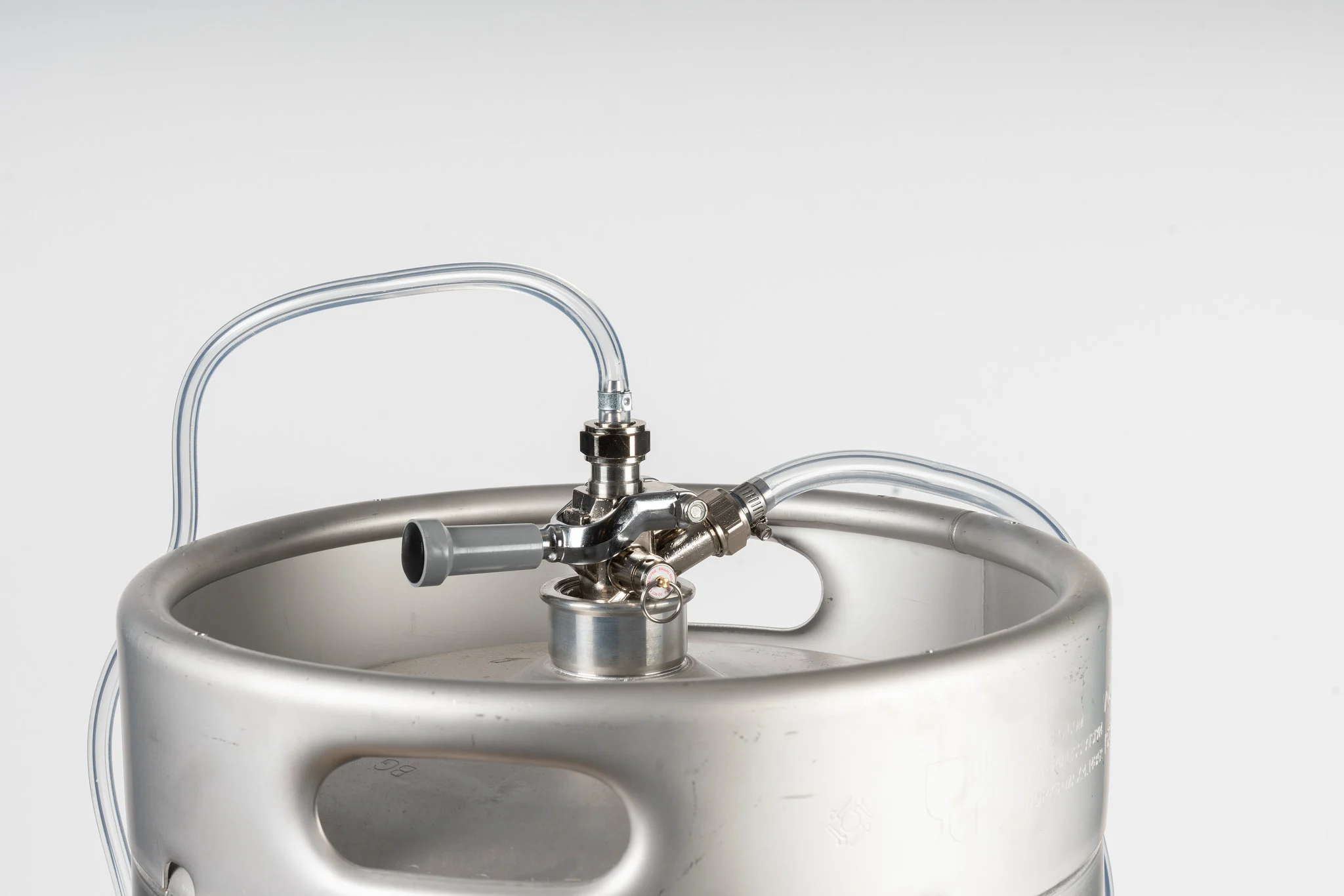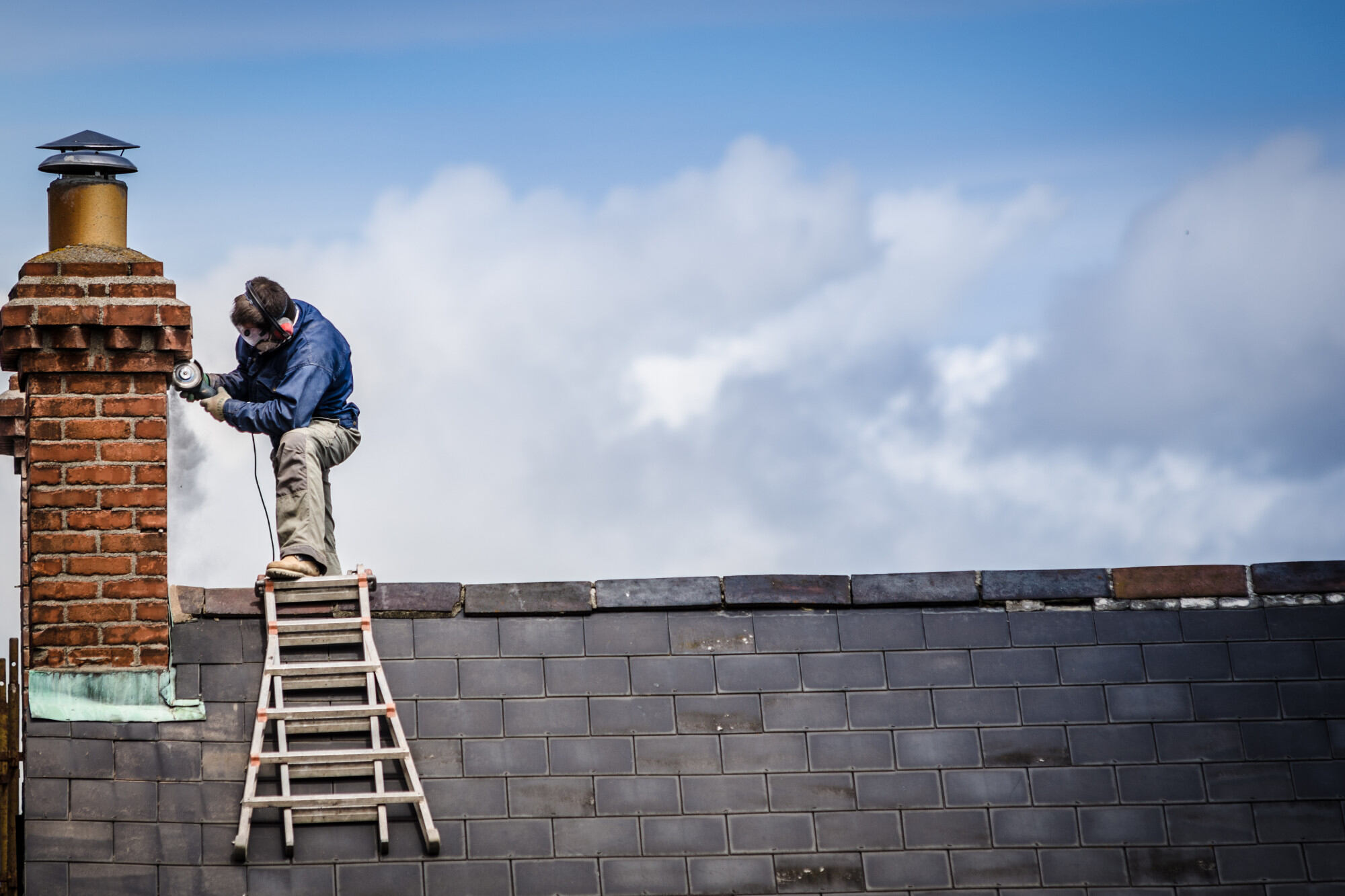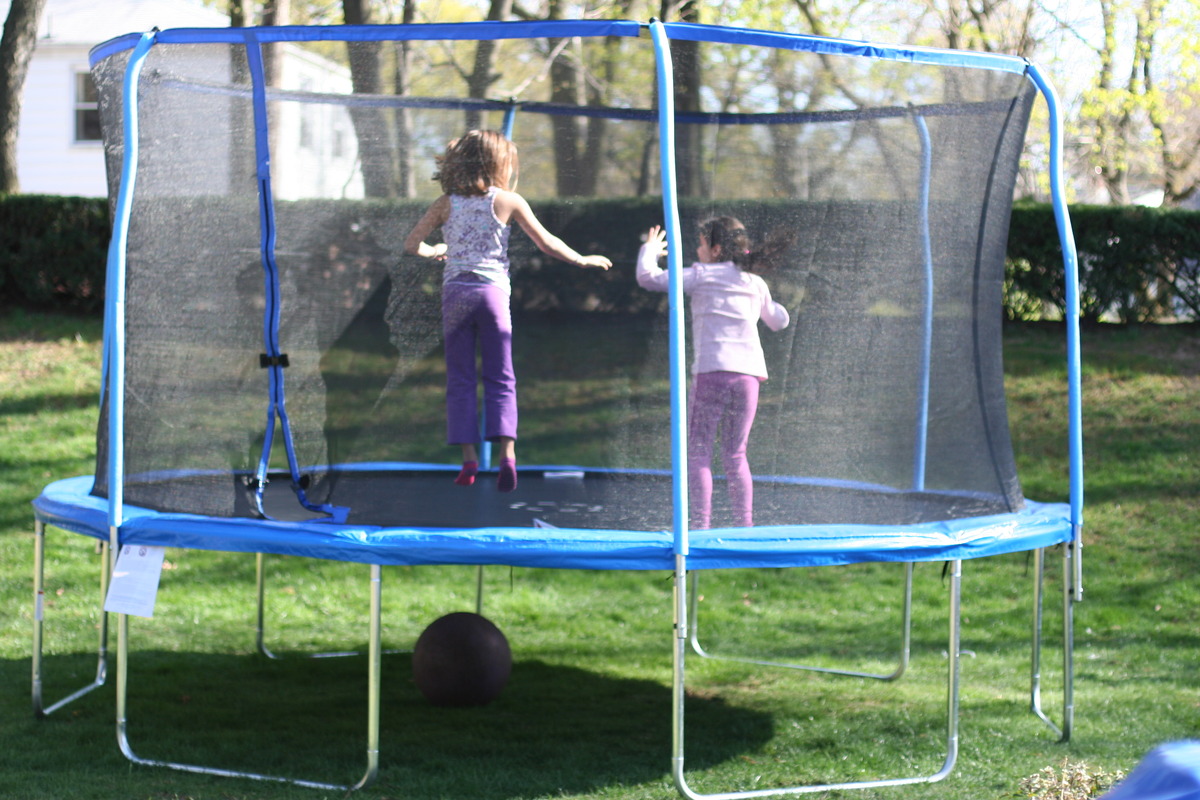Home>Gardening & Outdoor>Outdoor Recreation & Activities>How Does A Trampoline Work?


Outdoor Recreation & Activities
How Does A Trampoline Work?
Modified: January 14, 2024
Learn how trampolines work and the physics behind them. Discover the outdoor recreation and activities that make trampolines fun for all ages. Explore the science of bouncing!
(Many of the links in this article redirect to a specific reviewed product. Your purchase of these products through affiliate links helps to generate commission for Storables.com, at no extra cost. Learn more)
**
Introduction
**
So, you've seen trampolines in action, and perhaps you've even had the exhilarating experience of bouncing on one. But have you ever wondered how these amazing contraptions actually work? The mechanics behind trampolines are fascinating, and understanding them can deepen your appreciation for this popular recreational equipment.
Trampolines are not just about bouncing up and down; they involve a sophisticated interplay of physics, engineering, and safety measures. In this article, we'll delve into the inner workings of trampolines, exploring the components that make them function, the science behind bouncing, and the crucial role of safety measures.
Get ready to embark on an enlightening journey through the world of trampolines, where we'll unravel the mysteries of their mechanics and reveal the secrets of their spring-loaded allure. Whether you're a trampoline enthusiast, a curious mind seeking knowledge, or a concerned parent wanting to understand the safety aspects, this article will provide you with a comprehensive understanding of how trampolines work. Let's bounce into the fascinating realm of trampoline mechanics!
**
Key Takeaways:
- Trampolines work by harnessing physics to create the exhilarating sensation of bouncing, involving potential energy, gravity, and air resistance. Understanding the mechanics enhances appreciation for the experience.
- The components of a trampoline, including the frame, mat, springs, safety enclosure, and padding, work together to ensure a safe, thrilling, and enduring bouncing experience for users of all ages.
Read more: What Muscles Does A Trampoline Work
The Mechanics of Bouncing
**
At the heart of a trampoline's functionality lies the captivating physics of bouncing. When you jump on a trampoline, you experience the sensation of being propelled into the air and then gently lowered back down. This seemingly simple act is governed by a complex interplay of forces and energy transformations.
The trampoline mat, also known as the bounce surface, is a crucial element in the mechanics of bouncing. It is designed to be flexible and durable, capable of withstanding the repetitive impact of bouncing. When you jump on the mat, it deforms under the force of your weight, storing potential energy. This potential energy is then released, propelling you upwards as the mat returns to its original position.
As you soar into the air, another force comes into play: gravity. The Earth's gravitational pull exerts a downward force on your body, seeking to bring you back to the trampoline surface. However, the elastic nature of the trampoline mat, combined with your initial upward momentum, allows you to defy gravity momentarily, experiencing the exhilarating sensation of weightlessness before descending back to the mat.
The mechanics of bouncing also involve the conversion of kinetic energy. When you land on the trampoline mat, the kinetic energy from your upward motion is transformed into elastic potential energy stored in the mat. This energy transfer is a fundamental principle underlying the continuous cycle of bouncing on a trampoline.
Furthermore, the air inside the trampoline enclosure plays a role in the mechanics of bouncing. As you jump, the air within the enclosure is displaced, creating a supportive cushion of air that contributes to the buoyancy and soft landing experience. The air resistance also affects your movement, adding an additional dynamic element to the bouncing process.
Understanding the mechanics of bouncing not only enhances your appreciation for the trampoline experience but also provides insights into the principles of physics at play. The next time you bounce on a trampoline, envision the intricate dance of forces and energies that enable you to defy gravity and experience the joy of soaring through the air.
**
Components of a Trampoline
**
When you gaze upon a trampoline, its seemingly simple structure belies the intricate components that work together to create the ultimate bouncing experience. Understanding the various parts of a trampoline allows us to appreciate the engineering ingenuity that goes into its design and construction.
1. Frame: The frame forms the structural foundation of the trampoline, providing stability and support. Typically made of galvanized steel for durability and rust resistance, the frame is engineered to withstand the forces exerted during bouncing and to maintain the trampoline's shape and integrity.
2. Mat: The mat, or bounce surface, is where the magic of bouncing happens. Constructed from high-quality, UV-resistant polypropylene material, the mat is designed to be resilient and provide a responsive surface for safe and enjoyable bouncing. Reinforced stitching and strong attachment to the frame ensure the mat can withstand the repetitive stresses of jumping.
3. Springs: The springs are pivotal components that facilitate the rebounding action of the trampoline. Typically made of high-tensile steel, these coiled springs connect the mat to the frame, storing and releasing energy as they stretch and compress during bouncing. The number and tension of the springs significantly influence the trampoline's bounce performance.
4. Safety Enclosure: A crucial safety feature, the enclosure consists of vertical netting supported by sturdy poles, forming a protective barrier around the trampoline. It prevents users from accidentally bouncing off the trampoline and provides a secure environment for aerial maneuvers. The enclosure enhances safety without compromising the exhilaration of bouncing.
5. Padding and Covers: To ensure user safety and protect against impact, trampolines are equipped with padding that covers the frame and springs. The padding, often made of high-density foam and durable PVC material, cushions the edges and springs, minimizing the risk of injury during accidental contact. Additionally, weather-resistant covers help shield the trampoline from environmental elements, prolonging its lifespan.
6. Legs and Feet: The stability of a trampoline is maintained by its legs and feet, which provide a secure base for the entire structure. These components are designed to distribute the weight and forces evenly, ensuring that the trampoline remains steady and level during use.
Understanding the components of a trampoline illuminates the level of engineering precision and safety considerations involved in its construction. Each part plays a crucial role in ensuring a safe, thrilling, and enduring bouncing experience for users of all ages. As we explore the inner workings of trampolines, let's continue our journey to uncover the pivotal role of springs in the mechanics of bouncing.
**
When jumping on a trampoline, the springs store energy as they stretch, then release it to propel you upwards. This creates the bouncing effect.
The Role of Springs
**
When it comes to the captivating bounce of a trampoline, the springs take center stage as the unsung heroes of the experience. These coiled, resilient components play a pivotal role in the mechanics of bouncing, transforming the trampoline into a dynamic platform that propels users into the air with exhilarating force.
Elastic Potential Energy: The springs are the primary source of elastic potential energy in a trampoline. When a user jumps on the mat, the springs stretch and store potential energy, which is then released to propel the user upwards. This energy storage and release mechanism is what makes trampoline bouncing so engaging and enjoyable.
Bounce Performance: The number, length, and tension of the springs directly impact the trampoline's bounce performance. A higher quantity of springs distributed evenly across the frame enhances the uniformity and responsiveness of the bounce, providing a consistent and enjoyable experience for users of varying weights and skill levels.
Durability and Resilience: Quality springs are engineered to withstand the repetitive stretching and compression cycles experienced during bouncing. Made of high-tensile steel, these springs exhibit exceptional resilience, ensuring that they can endure the rigors of frequent use without losing their elasticity or structural integrity.
Safety and Stability: In addition to facilitating dynamic bouncing, the springs contribute to the overall safety and stability of the trampoline. By securely connecting the mat to the frame, the springs maintain the structural integrity of the trampoline, preventing excessive movement and ensuring a secure and predictable bouncing experience.
Maintenance and Inspection: Regular maintenance and inspection of the springs are essential to ensure the continued safety and performance of the trampoline. Periodic checks for signs of wear, corrosion, or damage, along with proper lubrication of the springs, help preserve their functionality and extend their lifespan.
Customization and Optimization: Advanced trampoline designs may feature adjustable or interchangeable springs, allowing users to customize the bounce characteristics to suit their preferences. By modifying the spring configuration, users can tailor the trampoline's performance to accommodate different styles of bouncing, from gentle, rhythmic movements to energetic, high-flying maneuvers.
Enhancing the Bouncing Experience: Ultimately, the springs are instrumental in creating an exhilarating and dynamic bouncing experience that captivates users of all ages. Their ability to store and release energy, provide stability, and contribute to the trampoline's overall performance elevates the joy and excitement of bouncing to new heights.
As we unravel the significance of springs in the realm of trampolines, we gain a deeper appreciation for the intricate engineering and physics that underpin the art of bouncing. Next, we will explore the paramount importance of safety measures in ensuring that the trampoline experience remains a source of exhilaration and enjoyment while minimizing potential risks.
**
Safety Measures
**
While the allure of bouncing on a trampoline is undeniable, ensuring the safety of users is paramount to preserving the enjoyment and minimizing the risk of injuries. Trampoline safety measures encompass a range of components and guidelines designed to create a secure environment for users of all ages, allowing them to experience the thrill of bouncing without compromising their well-being.
Enclosure Systems: A fundamental safety feature, trampoline enclosures consist of robust netting supported by sturdy poles, forming a protective barrier around the perimeter of the trampoline. The enclosure prevents users from accidentally bouncing off the trampoline surface, reducing the risk of falls and providing a confined space for safe and controlled bouncing.
Spring Padding: The edges of the trampoline mat and the springs are covered with high-density foam padding and durable, weather-resistant material. This padding serves as a protective barrier, minimizing the risk of accidental impact with the springs and frame. By cushioning these areas, the padding reduces the likelihood of injuries during bouncing activities.
Weight Limits and User Guidelines: Trampolines are designed to accommodate specific weight limits, and it is essential to adhere to these guidelines to ensure safe usage. Additionally, providing clear instructions and guidelines for users, including proper jumping techniques, the number of users allowed on the trampoline simultaneously, and age-appropriate supervision, contributes to a safer and more controlled bouncing environment.
Regular Inspections and Maintenance: Periodic inspections of the trampoline components, including the frame, springs, mat, enclosure, and padding, are crucial for identifying any signs of wear, damage, or deterioration. Routine maintenance, such as tightening bolts, lubricating moving parts, and replacing worn-out components, helps uphold the trampoline's structural integrity and safety standards.
Supervision and Instruction: Adequate supervision and clear instructions from responsible adults are essential for promoting safe trampoline usage, especially for younger users. Educating users about proper bouncing techniques, the importance of staying within the designated bouncing area, and the potential risks associated with reckless behavior fosters a culture of safety and awareness.
Training and Skill Development: Encouraging users to develop their bouncing skills gradually and progressively, starting with basic maneuvers and gradually advancing to more complex movements, promotes a safer and more controlled trampoline experience. Training programs and structured activities can enhance users' coordination, balance, and spatial awareness, reducing the likelihood of accidents.
Weather Considerations: Adverse weather conditions, such as strong winds, rain, or snow, can compromise the safety and stability of trampolines. It is essential to secure the trampoline during inclement weather or consider temporary disassembly and storage to prevent damage and ensure user safety.
By prioritizing and implementing comprehensive safety measures, trampoline enthusiasts can enjoy the exhilarating experience of bouncing while minimizing the potential risks associated with this dynamic activity. As we emphasize the significance of safety, let's conclude our exploration of trampoline mechanics with a reflection on the intrinsic joy and benefits that trampolines offer to users of all ages.
**
Read more: How Does Alexa Work
Conclusion
**
The world of trampolines is a captivating blend of physics, engineering, and recreational enjoyment. From the mesmerizing mechanics of bouncing to the intricate components that form the trampoline’s structure, this article has shed light on the inner workings of these dynamic platforms of aerial excitement.
Trampolines, with their resilient mats, robust frames, and pivotal springs, offer more than just a means of bouncing; they provide a gateway to a world of exhilaration, physical activity, and skill development. The joy of soaring through the air, defying gravity with each bound, is a testament to the harmonious interplay of forces and energies that trampolines harness.
Amidst the thrill of bouncing, safety measures stand as guardians of well-being, ensuring that the experience remains a source of joy and vitality. Enclosures, padding, user guidelines, and maintenance routines converge to create a secure environment where users can unleash their boundless energy and embrace the freedom of flight without compromising their safety.
Trampolines are more than recreational equipment; they are catalysts for physical fitness, coordination, and sheer delight. As users engage in the rhythmic rhythm of bouncing, they hone their motor skills, enhance their balance, and experience the sheer exhilaration of defying gravity. Whether it’s a child’s gleeful laughter or an adult’s sense of weightlessness, trampolines inspire moments of pure, unbridled joy.
As we conclude our journey through the realm of trampoline mechanics, let’s carry with us a deepened appreciation for the artistry and engineering that underpin these bouncing marvels. From the elastic potential energy stored in the springs to the protective embrace of the enclosure, trampolines embody the fusion of science and recreation, inviting us to bounce, soar, and revel in the sheer delight of defying gravity.
So, the next time you encounter a trampoline, take a moment to ponder the intricate dance of forces and energies that make bouncing possible. Embrace the joy, relish the freedom, and celebrate the sheer exhilaration of bouncing on a trampoline – a testament to the boundless spirit of human ingenuity and the enduring allure of defying gravity.
Frequently Asked Questions about How Does A Trampoline Work?
Was this page helpful?
At Storables.com, we guarantee accurate and reliable information. Our content, validated by Expert Board Contributors, is crafted following stringent Editorial Policies. We're committed to providing you with well-researched, expert-backed insights for all your informational needs.















0 thoughts on “How Does A Trampoline Work?”